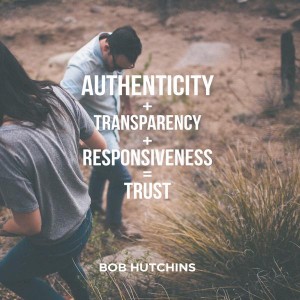Looking for ways to appeal to Millennial customers (and attract Millennial talent)? Contributor Chris Marentis suggests that storytelling can be a helpful tool in marketing your business.

The problem: Home services businesses are facing growth challenges because they are failing to attract talent. In a recent HomeAdvisor survey, 93 percent of business owners expressed the belief that their business would grow in the next 12 months if not for hiring challenges.
Similarly, a study by the Joint Center for Housing Studies of Harvard University found larger-scale remodelers consider finding qualified labor to be their top business challenge. There are plenty of skilled labor jobs available, yet younger workers are not pursuing them.
According to a new Pew Research Center analysis of US Census Bureau data, “more than one in three American workers today are Millennials (adults ages 18–34 in 2015), and this year they surpassed Generation X to become the largest share of the American workforce.”
The looming question: how to convince Millennials to… ?
The solution: In a presentation entitled “Remodeling Industry Labor Trends,” made at the Joint Center for Housing Studies of Harvard University, Research and Data Analyst Abbe H. Will suggested the following two solutions:
- Increased focus on training and apprenticeship programs [is] needed to rebuild the industry workforce.
- Changing attitudes toward compensation and benefits by home services companies.
This is where marketing can help.
Attracting Millennial talent
Marianne Cusato, HomeAdvisor’s Housing Expert and a Professor at University of Notre Dame’s School of Architecture, proposes several solutions for the home improvement and construction industry’s woes. Her insights are outlined in the report, “Where is the Next Generation of Craftsmen?”
- Harness the power of the maker movement. Grassroots movements like these will increase people’s interest in developing and using skills to make their own creations. Home Depot does this with their Saturday workshops for kids, where kids are given materials to work on a project and create things.
- The industry must offer a practical alternative to the four-year degree. The concept of an apprentice program as an alternative to a college degree has worked in countries like Germany as an alternative well-paying career path.
- Job benefits such as autonomy, flexible hours and entrepreneurship can help to attract younger workers into the skilled labor field.
- The industry needs to create mentorship and apprenticeship programs to prepare young workers for meaningful long-term positions in the skilled labor trades.
These solutions are key to attracting and retaining talent. My friend, industry expert Mark Richardson, advises remodelers to “be a magnet as opposed to a net.” Attracting talent should be a focus 100 percent of the time — not just when you need talent!
Your business can achieve this by adding a dimension of storytelling to its marketing efforts.
Tell a story to continually attract customers & employees
Smart professional businesses can implement a storytelling strategy to attract both Millennial employees and customers. Digital channels are the best forum, since Millennials spend a lot of time online — indeed, Millennials spend almost 30 hours a month on social media apps.
In addition to the solutions from Harvard and HomeAdvisor, here are five key ways to use marketing to attract both customers and your future employees.
1. Develop a cutting-edge brand presence online
Your customers are digital, and your future employees in the Millennial demographic are digital. Employees want to work for a company with a great web presence that uses social media to interact with customers and prospects.
They will check out the “About” page to see who works for your company, their background and what they stand for. They’ll evaluate the causes and events that the business supports. Stories of employees, awards and achievements will convince both your customers and future employees to seek more details.
2. Nurture online reviews and reputation
Word of mouth is still the best way for people to learn about your business, and existing customers and current employees are a vital source of referrals.
Consider what happens after a referral is made: Most people will conduct an online search for the business to make sure that it is suitable for their needs.
For local businesses, reviews and ratings are often displayed directly in the search results. Low ratings and bad reviews are a turnoff for both new customers and job seekers. Implement a proactive program to get more reviews and ratings. If your company has a good reputation with job performance, make sure that is reflected online as well.
3. Achieve social validation and credibility
Have a planned social strategy to engage with your customers and prospects. Through your social presence, a prospective employee sees if your company is flooding the stream with pointless automatic updates or showing a great brand presence by educating, demonstrating thought leadership and attracting the audience back to the website through great content and regular updates.
If your last tweet was in 2012, they may not believe you are still in business. On the other hand, if you are a brand with an active social presence, visitors can see you responding to the community and clients. You may even get a tweet from a prospective employee!
To help attract talent, establish your profile on Glassdoor, respond to reviews and encourage all employees to post reviews. It is possible that Glassdoor may be appearing in your search results for your brand, and you want to be able to show your participation.
4. Adopt visual media
It is indeed a visual world. Photos, videos and animated GIFs delight your customers and prospects — and will also delight your future employees. If you have a wonderful product or service, spend the money to showcase it visually through professional photos (or videos) that are updated frequently on your website.
In terms of social media, nearly three out of five younger Millennials (18–24) use Snapchat, and recently Snapchat overtook Twitter in terms of daily usage. Additionally, eMarketer predicts that nearly one in five Americans will be using Snapchat by the end of the year.
Don’t stretch resources to adopt every new social network that comes along, but you should create a strategy of publishing your visual assets to the social networks your audience engages with the most.
5. Share company culture
Customers like to see photos of your team and hear back stories about the culture at your company. They know a happy employee will serve them better and want to see how you celebrate your employees. Video interviews, awards and fun events tell a good story and are sure to delight future employees.
Don’t forget about your existing employees, though — create a marketing plan to explain to them the benefits of your workplace and how your employees can grow with the company.
Takeaway
Adding an element of storytelling in your marketing will help you attract both customers and employees. The values of the company (and the skills your team has developed) make for a good story. Have a program to share your company values and marketing insights with your employees.
Some opinions expressed in this article may be those of a guest author and not necessarily Marketing Land. Staff authors are listed here.
Marketing Land – Internet Marketing News, Strategies & Tips
(46)









